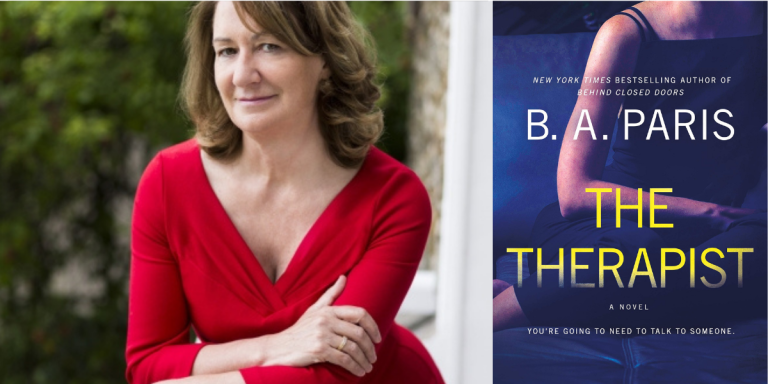How to Make a Character Forget: Writing a Protagonist with Dissociative Amnesia
 Writing a character who has forgotten creates a myriad of problems and opportunities for the writer. My debut novel The Night She Went Missing opens with one such character: when eighteen-year-old Emily Callahan is found floating in Galveston harbor, she is unconscious but alive. She can’t remember where she’s been, with whom, or why she went missing ten weeks ago.
Writing a character who has forgotten creates a myriad of problems and opportunities for the writer. My debut novel The Night She Went Missing opens with one such character: when eighteen-year-old Emily Callahan is found floating in Galveston harbor, she is unconscious but alive. She can’t remember where she’s been, with whom, or why she went missing ten weeks ago.
As a pantser, I’m getting to know characters, their dilemmas, and their hometowns as I go. I write unreadable first drafts and then revise chapters up to twenty times. With such a foolproof process [insert eyeroll here], you may be surprised that The Night She Went Missing didn’t just flow out of me. I restructured timelines and renamed characters and deleted chapters, all the time sorting out which characters could best move Emily’s story forward while she’s lying in a hospital bed. In the end, I mostly assigned that task to three mothers because frustrated women get things done.
I was inspired to write this story by the real-life story of Hannah Upp, which I first read about in Rachel Aviv’s gripping New Yorker article, “How a Young Woman Lost Her Identity.” I was teaching journalism at the time, and my students and I read the piece as a mentor text for writing strong features. Aviv details Hannah’s story of being diagnosed with dissociative fugue and going missing three times. As of writing this article, she has not been seen since September 14, 2017.
I’ve found that reading long-form articles like Aviv’s can act as inspiration and research, so I keep a digital folder archived with the most interesting pieces I come across. Perhaps it’s because of my background as a journalism undergrad that real-life stories often act as my muse, and what I love about writing fiction is taking reality and twisting and turning the story into something that adds layers of what ifs.
Creative license in fiction writing is an essential part of what we do as storytellers. If we don’t have to stick to the actual facts–as journalists must–it allows us to weave new truths of our own. I did this with Emily’s diagnosis, in fact. Yes, she is diagnosed with an actual disorder–dissociative amnesia–but she does not meet all of the criteria for such a diagnosis. That is intentional.
In early drafts of my novel, Emily took on an alternate persona during her fugue state, a storyline that was more true to her diagnosis but also a lot more confusing for the reader. Changing Emily’s name to “Ava” and modifying her character into something unrecognizable just didn’t work, so even though I knew from medical research that these changes would actually be more realistic, I decided as a writer that it would be more true to the story—and kinder to the reader—to maintain more consistency with her life before she goes missing. Emily still forgets plenty of things, but her name and her basic interests are not among those lost memories.
Another challenge to writing a story with a character who forgets is deciding who will remember for her. I have a confession here: at one point, this novel had nine POVs. Nine! I suppose I really could not decide whose voice should speak the loudest. Thankfully, I have an amazing agent and an amazing editor who helped me course-correct by focusing the POV on the three mothers.
Catherine is Emily’s mother, and Leslie and Morgan are mothers of teenagers who were there the night Emily went missing. These three women are able to offer a sobering, birds-eye view of the town, the families involved, and the elite private school the children attend. Hearing from these three women allows the reader to make discoveries about Emily without her having to do much of the telling.
Writing a character who forgets is no easy task, but it can be a rewarding one. It taught me that it’s good to read widely and research deeply, that it’s then okay to twist reality a bit when building a world, and finally, that it’s important to be intentional about which characters do the story-telling. My hope is that even though Emily forgets, her story—and the real-life stories of others like her—will be remembered.
Read the Book
An intriguing and twisty domestic suspense about loyalty and deceit in a tight-knit Texas community where parents are known to behave badly and people are not always who they appear to be.
Emily, a popular but bookish prep school senior, goes missing after a night out with friends. She was last seen leaving a party with Alex, a football player with a dubious reputation. But no one is talking.
Now three mothers, Catherine, Leslie and Morgan, friends turned frenemies, have their lives turned upside down as they are forced to look to their own children—and each other’s—for answers to questions they don’t want to ask.
Each mother is sure she knows who is responsible, but they all have their own secrets to keep and reputations to protect. And the lies they tell themselves and each other may just have the potential to be lethal in this riveting debut.
By clicking 'Sign Up,' I acknowledge that I have read and agree to Hachette Book Group’s Privacy Policy and Terms of Use





